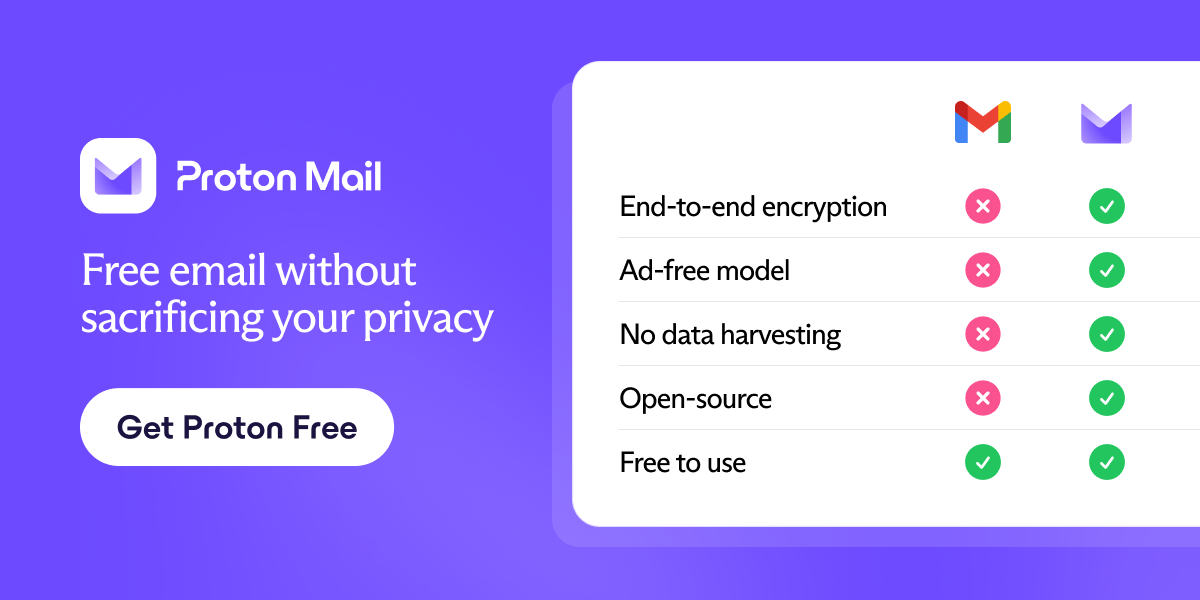- Null Pointer Club
- Posts
- The Hidden Costs of Framework Fatigue in Modern Development
The Hidden Costs of Framework Fatigue in Modern Development
When “staying up-to-date” starts slowing us down
In today’s development world, frameworks evolve faster than most developers can keep up. One week it’s React 18, next week it’s SolidStart, then a new flavor of TypeScript integration drops, followed by an opinionated meta-framework that promises to “simplify everything.”
On paper, this looks like progress.
In reality, it often feels like exhaustion.
This constant churn — the need to learn, migrate, and refactor — has created what many call Framework Fatigue. It’s the quiet tax modern developers pay for living in an ecosystem that never stops innovating.
But the question is — are we actually building faster, or just learning endlessly?
Free email without sacrificing your privacy
Gmail tracks you. Proton doesn’t. Get private email that puts your data — and your privacy — first.
What Is Framework Fatigue?
Framework Fatigue isn’t just about new releases or changing syntax. It’s the accumulation of small cognitive costs:
Relearning familiar patterns under new names.
Debugging “magical” abstractions that hide core logic.
Switching from one “best practice” to another every six months.
Juggling documentation that changes faster than client requirements.
At its heart, it’s a context-switch overload — when developers spend more time maintaining knowledge than building things that matter.
And while it’s often brushed off as part of “keeping up,” the hidden costs are deeper than most teams realize.
The Real Costs: Beyond Developer Frustration
Framework Fatigue doesn’t just slow individuals — it shapes entire company cultures and product outcomes.
Let’s break it down:
Cognitive Drain
Each new framework requires re-learning vocabulary, configuration, and mental models. That constant adjustment reduces deep work time and problem-solving focus.Technical Debt in Disguise
Every “rewrite” or migration adds hidden debt — abandoned projects, incompatible dependencies, and forgotten test coverage. The code looks modern, but the foundation weakens.Recruitment & Onboarding Bottlenecks
Hiring for niche frameworks narrows your talent pool. Training new hires takes longer. Suddenly, your stack becomes a moat — but not the protective kind.Shorter Shelf Life for Expertise
Developers feel their hard-earned knowledge depreciating faster. Skills that were in demand last year are now “legacy.” That demoralization leads to burnout and churn.Strategic Myopia
Teams end up optimizing for “developer experience” rather than user experience. They rebuild dashboards while ignoring customer pain points.
In short: too many frameworks make teams busy — not better.
Why We Keep Doing It
The irony? Developers are rational people — but the ecosystem incentivizes irrational adoption.
FOMO (Fear of Missing Out): No one wants to be seen as outdated.
Job Security Signaling: Being fluent in the latest stack looks good on résumés.
Marketing Overload: Frameworks sell themselves as “faster,” “lighter,” “easier.”
Real Improvements (sometimes): Many do solve genuine pain points — but only marginally better than the last.
It’s like chasing the perfect editor — only to realize the bottleneck wasn’t the tool, but your focus.
The Stoic Developer Mindset
The Stoic answer to Framework Fatigue isn’t to reject new tools — it’s to master discernment.
Seneca wrote, “We suffer more in imagination than in reality.”
For developers, that translates to:
Don’t fear being outdated — fear losing clarity.
Here’s how modern devs can apply a Stoic approach:
Adopt only when necessary.
If a new framework doesn’t clearly improve your product’s maintainability, performance, or developer flow, wait. Maturity beats novelty.Go deeper, not wider.
Mastering one tool deeply yields more long-term value than juggling five poorly understood ones.Abstract concepts, not tools.
Focus on transferable principles — architecture patterns, algorithms, data modeling — that transcend frameworks.Document your reasoning.
Every time your team adopts or upgrades, record why. Future you (and new hires) will thank you.Revisit fundamentals.
Understanding how browsers, compilers, or runtime environments actually work keeps you grounded no matter what framework sits on top.
Building Sanity Into Your Stack
The healthiest dev teams aren’t the ones chasing every new release — they’re the ones with a strong selection discipline.
They ask:
Does this framework solve a real pain, or just add another layer?
How long will it take for our team to become productive again?
What’s the cost of maintaining this choice in 2 years?
Teams that think like this often end up innovating faster — because they slow down intentionally.
Innovation isn’t speed — it’s direction.
Conclusion: The True Framework Is You
Frameworks will come and go.
Syntax will change.
Abstractions will multiply.
But what remains constant is the developer’s ability to reason, to simplify, and to build something meaningful.
Framework fatigue is not inevitable — it’s optional.
If you can hold onto fundamentals, question trends, and choose tools consciously, you’ll find clarity in a chaotic ecosystem.
Because at the end of the day, it’s not the framework that defines your craft — it’s your framework of thinking.
Fresh Breakthroughs and Bold Moves in Tech & AI
Agentic AI Is Transforming how Governments Develop Software Link
Agentic AI = Autonomous Decision-Makers
Governments in the UK are experimenting with “agentic AI” systems — AI agents capable of making decisions independently (within constraints), not just suggestions.Speed Meets Compliance
These AI agents accelerate software delivery — handling code reviews, security checks, test generation, and legacy refactoring — all while supporting existing compliance and policy workflows.Reducing Technical Debt & Legacy Burden
One of the big use cases for government agencies is modernising old systems (think COBOL / legacy code). Agentic AI helps with patching, refactoring, and automating maintenance of dated infrastructure.Governance & Standards Become Non-Negotiable
To deploy autonomous AI agents in regulated sectors, agencies must build new policies: data-access permissions, quality standards, AI-auditability, and interoperability rules.Human + AI Collaboration Is the Future
Agentic AI doesn’t replace skilled developers; rather it augments them. The shift requires rethinking processes to incorporate AI agents as teammates — with continuous feedback, training, and evolving governance.
Until next time,
— Nullpointer Club Team

Reply